When I started knitting socks, rather than scarves and other flat rectangles, I got completely tangled in the decreases. I don’t knit
like most people, and certainly not like any knitting pattern I’ve ever
seen. I did a bit of research, and what I do is like what Annie Modesitt calls combined knitting (although I swear that’s what I learned from my grandmother, I doubt that it really is. Somewhere I seem to have made it up on my own, not even realizing that it was different for years.) Her web site got me going with decreases that went the right way, and my socks were successful.
I like to think about things, though, and this inspired me to think hard about knitting. The basics are pretty easy – lots of little loops, each running through the previous row. If they go to the back, they are
knit stitches
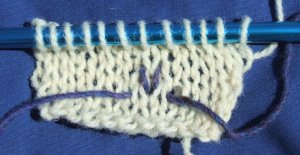
and if they go the other way, they are purl stitches.
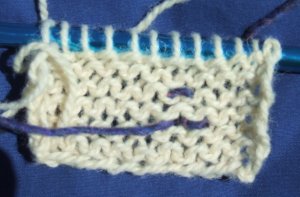
So far so good?
One of the things that is “wrong” with my style of knitting is that the stitches go the wrong way on the needle. In “regular” knitting, including both continental and

If you look hard, you’ll see that the course of the stitches follows a slight diagonal, and if you are a spinner or tablet weaver, you’ll immediately recognize it as Z. For non-spinners, this diagonal goes the same way as the center stroke on a Z. Another way to think about it is that the working yarn comes in and goes over the needle from the right to the left – the leading edge is to the front, and the trailing edge is to the back.
When I knit, the stitches go the other way, like the center stroke on an S. The leading edge is to the back, and the trailing edge is to the front.
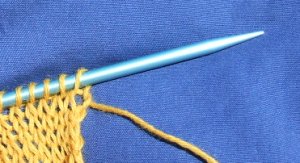
See the difference? This also means that you need to do different things when knitting and purling into these two different slanted kinds of stitches. There are two ways to put the stitches on the needle, and you can hold the yarn in your right hand or your left hand. If you have Z-stitches and hold the yarn in your right hand, that’s “regular” knitting, while if you hold the yarn in your left hand, that’s continental. Both kinds of knitters can follow regular knitting patterns as written – it doesn’t get weird until you start working with S-stitches. If you do, and hold the yarn in your left hand, then that’s combined knitting. You can also hold the yarn in your right hand, but I don’t know if that has a name.
To make a knit stitch, you want the top of the loop to go to the back of the fabric without crossing. To do that, you need to put the needle from the front to the back, over the leading edge and under the trailing edge.
In Z-knitting it looks like this:
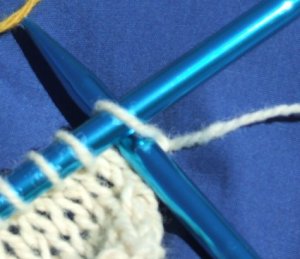
and in S-knitting it looks like this:
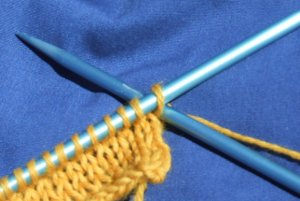
After that, you just have to wrap the yarn around the needle in the correct direction so that the new stitch has the same orientation as all your other stitches. You wrap the same direction whether you hold the yarn in your right hand or left hand, though the motion is different. When you hold the yarn in your right hand, you usually have to “wrap” it, while if the yarn is in your left hand you can often “scoop” it.
This how it looks for Z stitches:
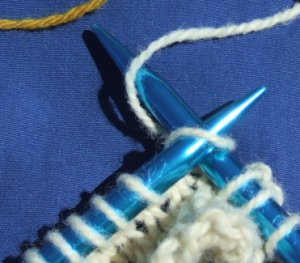
and for S stitches:
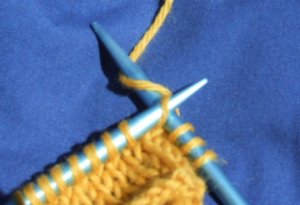
See the difference?
I’m sure that someone has done it, but I’ve never seen anything analyzing knitting techniques in this way, especially with the S and Z. Seems odd, since there are so many spinners who knit (or knitter who spin).
Coming soon… purl stitches, then increases, then decreases.